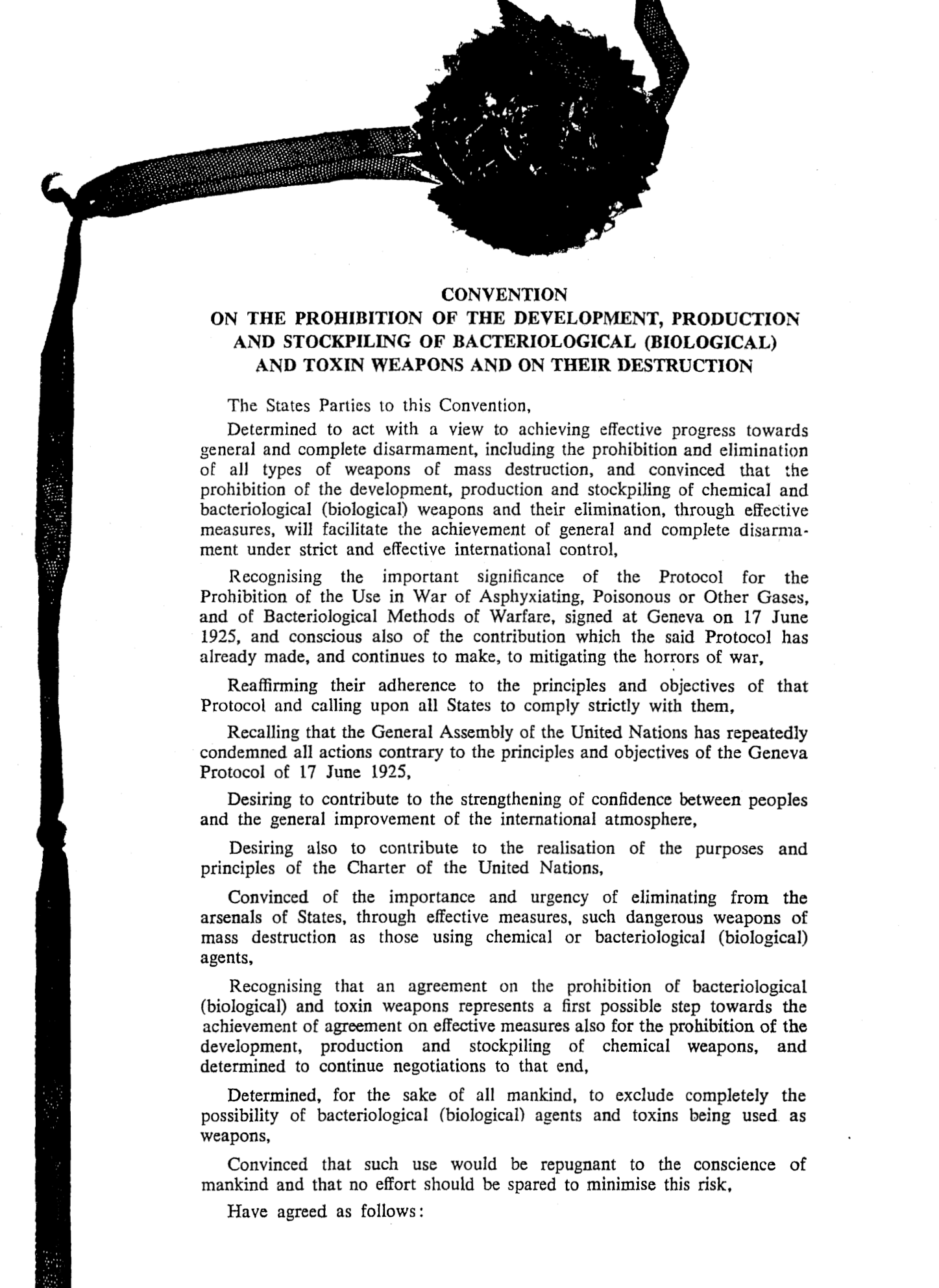|
Bioterror
Bioterrorism is terrorism involving the intentional release or dissemination of biological agents. These agents are bacteria, viruses, insects, fungi, and/or toxins, and may be in a naturally occurring or a human-modified form, in much the same way as in biological warfare. Further, modern agribusiness is vulnerable to anti-agricultural attacks by terrorists, and such attacks can seriously damage economy as well as consumer confidence. The latter destructive activity is called agrobioterrorism and is a subtype of agro-terrorism. Definition Bioterrorism is the deliberate release of viruses, bacteria, toxins or other harmful agents to cause illness or death in people, animals, or plants. These agents are typically found in nature, but could be mutated or altered to increase their ability to cause disease, make them resistant to current medicines, or to increase their ability to be spread into the environment. Biological agents can be spread through the air, water, or in food. Bio ... [...More Info...] [...Related Items...] OR: [Wikipedia] [Google] [Baidu] |
Biological Warfare
Biological warfare, also known as germ warfare, is the use of biological toxins or infectious agents such as bacteria, viruses, insects, and fungi with the intent to kill, harm or incapacitate humans, animals or plants as an act of war. Biological weapons (often termed "bio-weapons", "biological threat agents", or "bio-agents") are living organisms or replicating entities ( ''i.e.'' viruses, which are not universally considered "alive"). Entomological (insect) warfare is a subtype of biological warfare. Offensive biological warfare is prohibited under customary international humanitarian law and several international treaties. In particular, the 1972 Biological Weapons Convention (BWC) bans the development, production, acquisition, transfer, stockpiling and use of biological weapons. Therefore, the use of biological agents in armed conflict is a war crime. In contrast, defensive biological research for prophylactic, protective or other peaceful purposes is not proh ... [...More Info...] [...Related Items...] OR: [Wikipedia] [Google] [Baidu] |
Agro-terrorism
Agroterrorism, also known as agriterrorism and agricultural terrorism, is a malicious attempt to disrupt or destroy the agricultural industry and/or food supply system of a population through "the malicious use of plant or animal pathogens to cause devastating disease in the agricultural sectors"."Agriterrorism" Homeland Defense Stocks. It is closely related to the concepts of , and |
Anthrax
Anthrax is an infection caused by the bacterium ''Bacillus anthracis''. It can occur in four forms: skin, lungs, intestinal, and injection. Symptom onset occurs between one day and more than two months after the infection is contracted. The skin form presents with a small blister with surrounding swelling that often turns into a painless ulcer with a black center. The inhalation form presents with fever, chest pain and shortness of breath. The intestinal form presents with diarrhea (which may contain blood), abdominal pains, nausea and vomiting. The injection form presents with fever and an abscess at the site of drug injection. According to the USA's Centers for Disease Control and Prevention, the first clinical descriptions of cutaneous anthrax were given by Maret in 1752 and Fournier in 1769. Before that anthrax had been described only through historical accounts. The Prussian scientist Robert Koch (1843–1910) was the first to identify ''Bacillus anthracis'' as the bacteri ... [...More Info...] [...Related Items...] OR: [Wikipedia] [Google] [Baidu] |
Biological Agent
A biological agent (also called bio-agent, biological threat agent, biological warfare agent, biological weapon, or bioweapon) is a bacterium, virus, protozoan, parasite, fungus, or toxin that can be used purposefully as a weapon in bioterrorism or biological warfare (BW). In addition to these living or replicating pathogens, toxins and biotoxins are also included among the bio-agents. More than 1,200 different kinds of potentially weaponizable bio-agents have been described and studied to date. Biological agents have the ability to adversely affect human health in a variety of ways, ranging from relatively mild allergic reactions to serious medical conditions, including serious injury, as well as serious or permanent disability or even death. Many of these organisms are ubiquitous in the natural environment where they are found in water, soil, plants, or animals. Bio-agents may be amenable to "weaponization" to render them easier to deploy or disseminate. Genetic modification ... [...More Info...] [...Related Items...] OR: [Wikipedia] [Google] [Baidu] |
Glanders
Glanders is a contagious zoonotic infectious disease that occurs primarily in horses, mules, and donkeys. It can be contracted by other animals, such as dogs, cats, pigs, goats, and humans. It is caused by infection with the bacterium ''Burkholderia mallei''. Glanders is endemic in Africa, Asia, the Middle East, and Central and South America. It has been eradicated from North America, Australia, and most of Europe through surveillance and destruction of affected animals, and import restrictions. Glanders has not been reported in the United States since 1945, except in 2000, when an American lab researcher had an accidental exposure in the lab. It is a notifiable disease in the UK, although it has not been reported there since 1928. The term is from Middle English ' or Old French ', both meaning glands. Other terms include la, malleus, es, muermo, german: Rotz and no, snive. Presentation Signs of glanders include the formation of nodular lesions in the lungs and ulceration ... [...More Info...] [...Related Items...] OR: [Wikipedia] [Google] [Baidu] |
Bacteria
Bacteria (; singular: bacterium) are ubiquitous, mostly free-living organisms often consisting of one biological cell. They constitute a large domain of prokaryotic microorganisms. Typically a few micrometres in length, bacteria were among the first life forms to appear on Earth, and are present in most of its habitats. Bacteria inhabit soil, water, acidic hot springs, radioactive waste, and the deep biosphere of Earth's crust. Bacteria are vital in many stages of the nutrient cycle by recycling nutrients such as the fixation of nitrogen from the atmosphere. The nutrient cycle includes the decomposition of dead bodies; bacteria are responsible for the putrefaction stage in this process. In the biological communities surrounding hydrothermal vents and cold seeps, extremophile bacteria provide the nutrients needed to sustain life by converting dissolved compounds, such as hydrogen sulphide and methane, to energy. Bacteria also live in symbiotic and parasitic relationsh ... [...More Info...] [...Related Items...] OR: [Wikipedia] [Google] [Baidu] |
Smallpox Virus
Smallpox was an infectious disease caused by variola virus (often called smallpox virus) which belongs to the genus Orthopoxvirus. The last naturally occurring case was diagnosed in October 1977, and the World Health Organization (WHO) certified the global eradication of the disease in 1980, making it the only human disease to be eradicated. The initial symptoms of the disease included fever and vomiting. This was followed by formation of ulcers in the mouth and a skin rash. Over a number of days, the skin rash turned into the characteristic fluid-filled blisters with a dent in the center. The bumps then scabbed over and fell off, leaving scars. The disease was spread between people or via contaminated objects. Prevention was achieved mainly through the smallpox vaccine. Once the disease had developed, certain antiviral medication may have helped. The risk of death was about 30%, with higher rates among babies. Often, those who survived had extensive scarring of their sk ... [...More Info...] [...Related Items...] OR: [Wikipedia] [Google] [Baidu] |
Toxin
A toxin is a naturally occurring organic poison produced by metabolic activities of living cells or organisms. Toxins occur especially as a protein or conjugated protein. The term toxin was first used by organic chemist Ludwig Brieger (1849–1919) and is derived from the word toxic. Toxins can be small molecules, peptides, or proteins that are capable of causing disease on contact with or absorption by body tissues interacting with biological macromolecules such as enzymes or cellular receptors. Toxins vary greatly in their toxicity, ranging from usually minor (such as a bee sting) to potentially fatal even at extremely low doses (such as botulinum toxin). Toxins are largely secondary metabolites, which are organic compounds that are not directly involved in an organism's growth, development, or reproduction, instead often aiding it in matters of defense. Terminology Toxins are often distinguished from other chemical agents strictly based on their biological origin. Le ... [...More Info...] [...Related Items...] OR: [Wikipedia] [Google] [Baidu] |
Anton Dilger
Anton Casimir Dilger (13 February 1884 – 17 October 1918) was a German-American medical doctor and a main actor in the German biological warfare sabotage program during World War I. His father, Hubert Dilger, was a United States Army captain who had received the Medal of Honor for his work as an artilleryman at the Battle of Chancellorsville (1863) during the American Civil War. Dilger eventually fled to Madrid, Spain, where he died during the 1918 flu pandemic. ''SFGate'' Early life and career Dilger was born in , to which his par ...[...More Info...] [...Related Items...] OR: [Wikipedia] [Google] [Baidu] |
1918 Flu Pandemic
The 1918–1920 influenza pandemic, commonly known by the misnomer Spanish flu or as the Great Influenza epidemic, was an exceptionally deadly global influenza pandemic caused by the H1N1 influenza A virus. The earliest documented case was March 1918 in Kansas, United States, with further cases recorded in France, Germany and the United Kingdom in April. Two years later, nearly a third of the global population, or an estimated 500 million people, had been infected in four successive waves. Estimates of deaths range from 17 million to 50 million, and possibly as high as 100 million, making it one of the deadliest pandemics in history. The pandemic broke out near the end of World War I, when wartime censors suppressed bad news in the belligerent countries to maintain morale, but newspapers freely reported the outbreak in neutral Spain, creating a false impression of Spain as the epicenter and leading to the "Spanish flu" misnomer. Limited historical epidemiological ... [...More Info...] [...Related Items...] OR: [Wikipedia] [Google] [Baidu] |
Stevedore
A stevedore (), also called a longshoreman, a docker or a dockworker, is a waterfront manual laborer who is involved in loading and unloading ships, trucks, trains or airplanes. After the shipping container revolution of the 1960s, the number of dockworkers required declined by over 90%. Etymology The word ''stevedore'' originated in Portugal or Spain, and entered the English language through its use by sailors. It started as a phonetic spelling of ''estivador'' (Portuguese) or ''estibador'' (Spanish), meaning ''a man who loads ships and stows cargo'', which was the original meaning of ''stevedore'' (though there is a secondary meaning of "a man who stuffs" in Spanish); compare Latin ''stīpāre'' meaning ''to stuff'', as in ''to fill with stuffing''. In Ancient and modern Greek, the verb στοιβάζω (stevazo) means pile up. In the United Kingdom, people who load and unload ships are usually called ''dockers''; in Australia, they are called ''dockers'' or ''wharfies''; and ... [...More Info...] [...Related Items...] OR: [Wikipedia] [Google] [Baidu] |
Chevy Chase, Maryland
Chevy Chase () is the name of both a town and an unincorporated census-designated place (Chevy Chase (CDP), Maryland) that straddle the northwest border of Washington, D.C. and Montgomery County, Maryland, United States. Several settlements in the same area of Montgomery County and one neighborhood of Washington include ''Chevy Chase'' in their names. These villages, the town, and the CDP share a common history and together form a larger community colloquially referred to as Chevy Chase. Primarily a residential suburb, Chevy Chase adjoins Friendship Heights, a popular shopping district. It is the home of the Chevy Chase Club and Columbia Country Club, private clubs whose members include many prominent politicians and Washingtonians. Chevy Chase was noted as "the most educated town in America" in a study conducted by the Stanford Graduate School of Education, with 93.5 percent of adult residents having at least a bachelor's degree. The name ''Chevy Chase'' is derived from ''Che ... [...More Info...] [...Related Items...] OR: [Wikipedia] [Google] [Baidu] |
.jpg)








